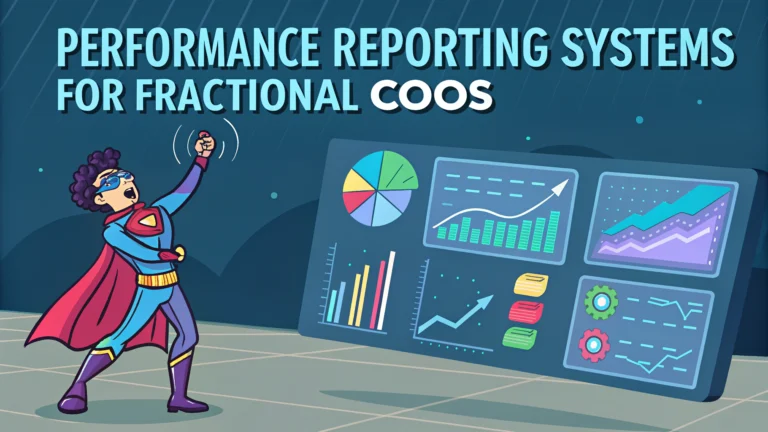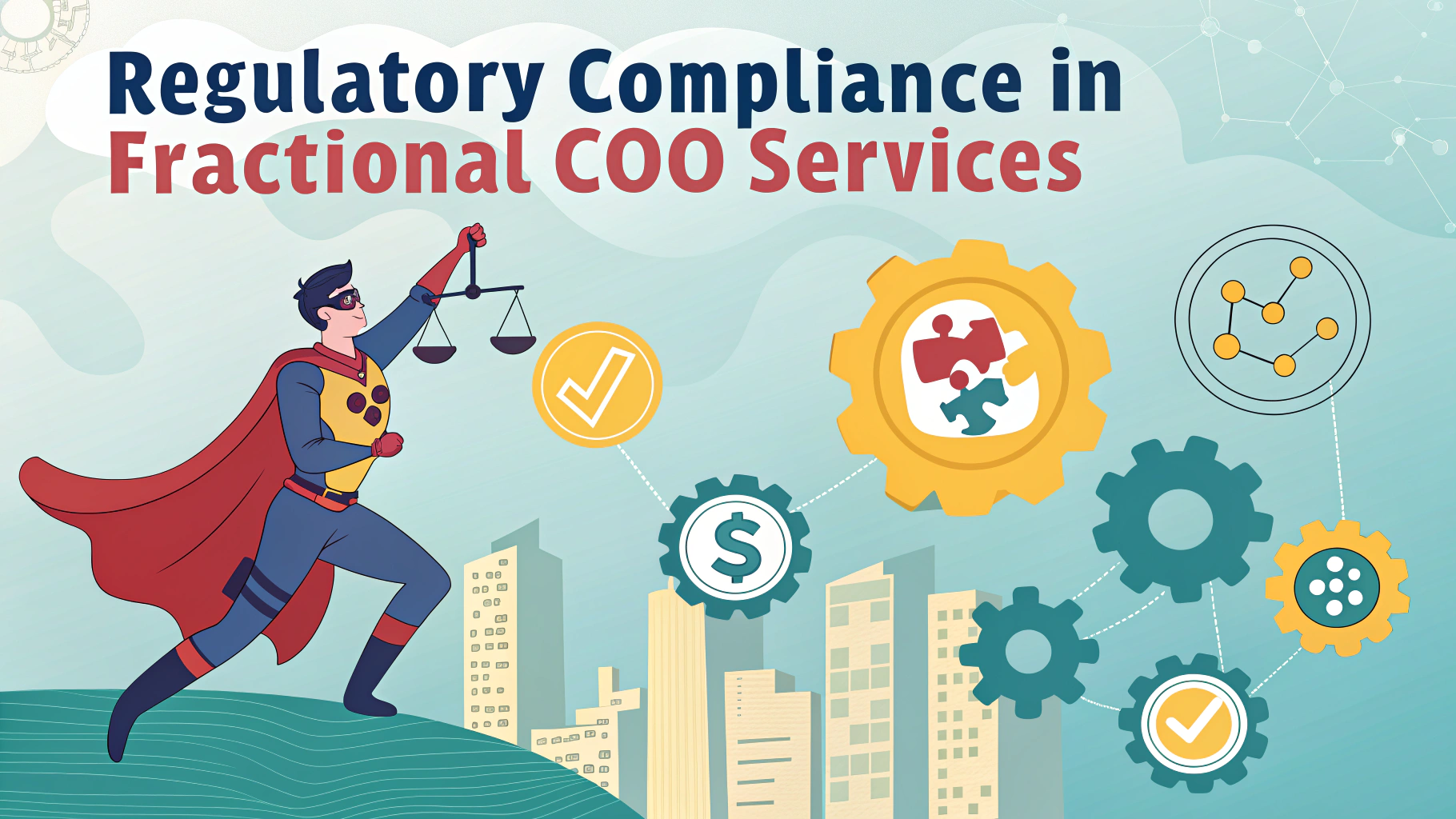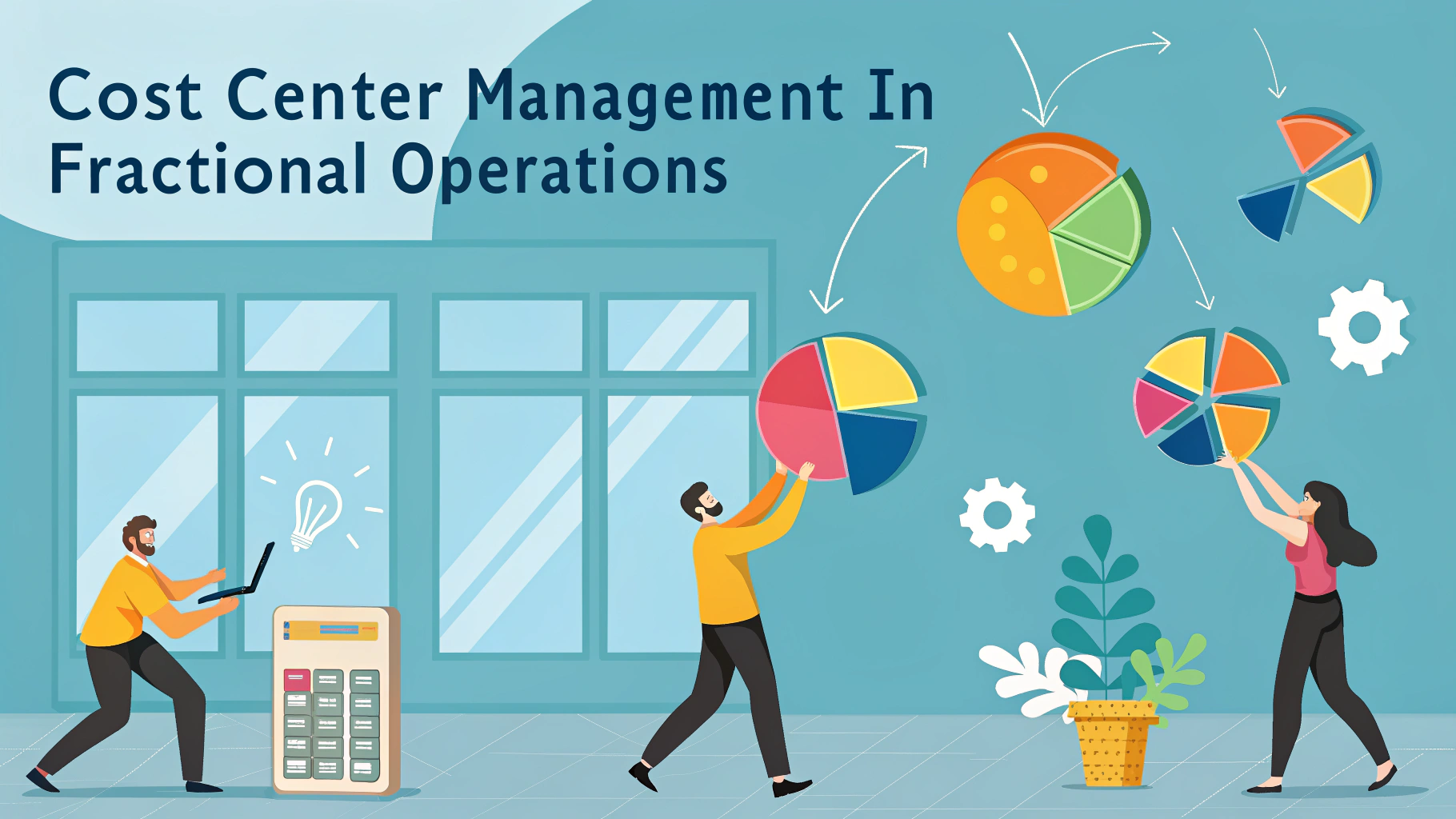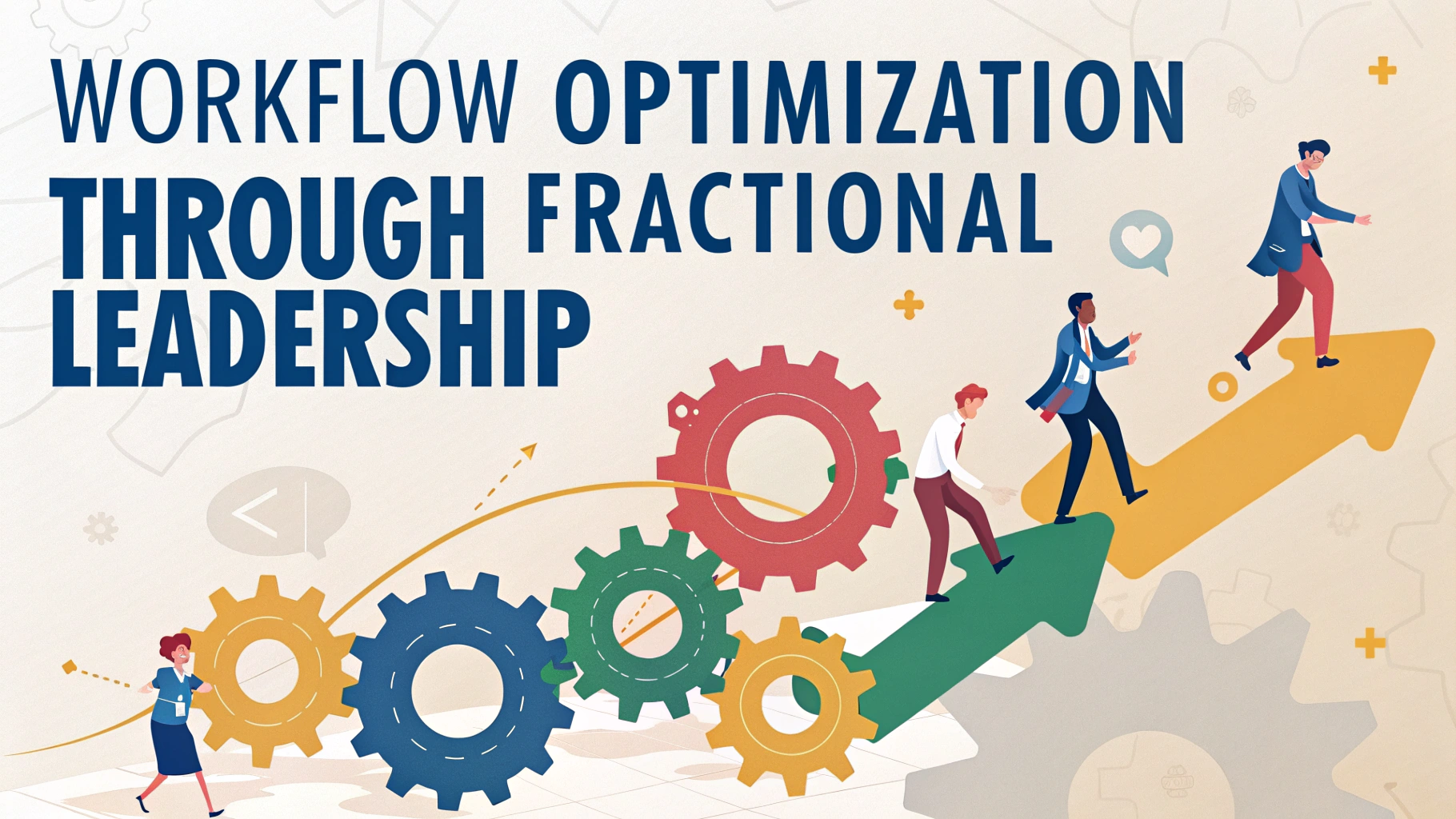A performance reporting system helps fractional COOs track, measure, and optimize business operations across multiple client organizations.
Creating standardized reporting frameworks allows part-time executives to efficiently monitor KPIs and spot trends that impact strategic decision-making.
This guide explores practical tools and methods for implementing effective performance tracking systems tailored to the unique needs of fractional COO engagements.
Essential Components of Performance Reporting
- Financial metrics (revenue, profit margins, cash flow)
- Operational KPIs (productivity, efficiency, quality)
- Customer satisfaction indicators
- Employee performance metrics
- Project milestone tracking
Recommended Reporting Tools
- Tableau – Data visualization and analytics
- Microsoft Power BI – Business intelligence and reporting
- Looker – Cloud-based business intelligence
- Sisense – AI-powered analytics platform
- Klipfolio – Real-time dashboard software
Setting Up Client-Specific Dashboards
Each client organization requires a customized dashboard reflecting their unique goals and operational priorities.
Standard dashboard elements should include:
- Executive summary view
- Department-specific metrics
- Goal tracking widgets
- Trend analysis charts
- Alert notifications
Data Collection and Integration
Implement automated data collection from various sources:
- ERP systems
- CRM platforms
- HR software
- Project management tools
- Financial systems
Reporting Frequency and Schedule
| Report Type | Frequency | Primary Audience |
|---|---|---|
| Executive Dashboard | Daily | Leadership Team |
| Operational Metrics | Weekly | Department Heads |
| Financial Reports | Monthly | Board/Stakeholders |
| Strategic Reviews | Quarterly | All Stakeholders |
Best Practices for Report Distribution
- Establish clear communication channels for report sharing
- Set up automated report delivery schedules
- Create role-based access levels
- Maintain data security protocols
- Document reporting procedures
Measuring Success and ROI
Track the effectiveness of your reporting system through these metrics:
- Time saved in data collection and analysis
- Accuracy of forecasting and planning
- Speed of decision-making
- Stakeholder satisfaction rates
- Achievement of business objectives
Taking Action on Performance Insights
Create an action plan template for addressing performance issues:
- Identify performance gaps
- Analyze root causes
- Develop improvement strategies
- Assign responsibilities
- Set implementation timelines
- Monitor progress
Moving Forward with Performance Management
Regular system reviews and updates ensure your performance reporting remains aligned with evolving business needs and technological capabilities.
Contact professional associations like the International Association of Fractional Executives (www.iafx.org) for additional resources and best practices.
Schedule quarterly assessments of your reporting framework to maintain effectiveness and adapt to changing business requirements.
Continuous Improvement Strategies
Implement feedback loops to refine and enhance reporting processes:
- Regular stakeholder surveys
- Performance review meetings
- System usage analytics
- Technology assessment updates
- Process optimization reviews
Risk Management and Compliance
Ensure reporting systems maintain:
- Data privacy standards
- Industry regulations
- Audit trails
- Backup procedures
- Access controls
Integration with Strategic Planning
Short-term Planning
- Weekly performance reviews
- Monthly goal adjustments
- Tactical response plans
Long-term Planning
- Annual strategy alignment
- Resource allocation planning
- Technology roadmap development
Empowering Performance Excellence
Effective performance reporting systems serve as the foundation for data-driven decision-making in fractional COO engagements. By implementing robust tracking mechanisms, maintaining standardized frameworks, and leveraging advanced analytics tools, fractional executives can deliver measurable value across multiple client organizations.
Success depends on:
- Consistent monitoring and optimization
- Stakeholder engagement and feedback
- Technology adaptation and updates
- Continuous professional development
- Industry best practice alignment
FAQs
- What are the essential components of a performance reporting system for fractional COOs?
Key components include KPI dashboards, financial metrics tracking, operational efficiency measurements, project management tools, and automated reporting capabilities. - How often should a fractional COO report performance metrics to stakeholders?
Performance metrics should typically be reported weekly for operational metrics, monthly for financial indicators, and quarterly for strategic objectives and comprehensive business reviews. - Which KPIs are most crucial for fractional COOs to monitor?
Critical KPIs include revenue growth, operational efficiency ratios, customer satisfaction metrics, employee productivity, cash flow metrics, and project completion rates. - What software platforms are commonly used by fractional COOs for performance reporting?
Popular platforms include Tableau, Power BI, Sisense, Zoho Analytics, and integrated ERP systems that offer customizable reporting features. - How can fractional COOs ensure data accuracy in performance reporting systems?
By implementing data validation protocols, establishing clear data collection procedures, using automated data integration tools, and conducting regular audits of reporting systems. - What are the best practices for presenting performance data to different stakeholders?
Use role-specific dashboards, visual representations for complex data, executive summaries for high-level stakeholders, and detailed reports for operational teams. - How should fractional COOs handle performance reporting across multiple client companies?
Maintain separate reporting systems for each client, use standardized templates while customizing metrics per client needs, and implement strict data segregation protocols. - What role does real-time reporting play in a fractional COO’s performance management system?
Real-time reporting enables immediate decision-making, early problem detection, and agile responses to operational challenges across different client organizations. - How can fractional COOs integrate performance reporting with risk management?
By incorporating risk indicators into regular reporting, setting up alert systems for threshold violations, and maintaining compliance tracking within the reporting framework. - What are the common challenges in implementing performance reporting systems for fractional COOs?
Challenges include data integration from multiple sources, maintaining consistency across different client systems, ensuring data security, and managing stakeholder expectations.








